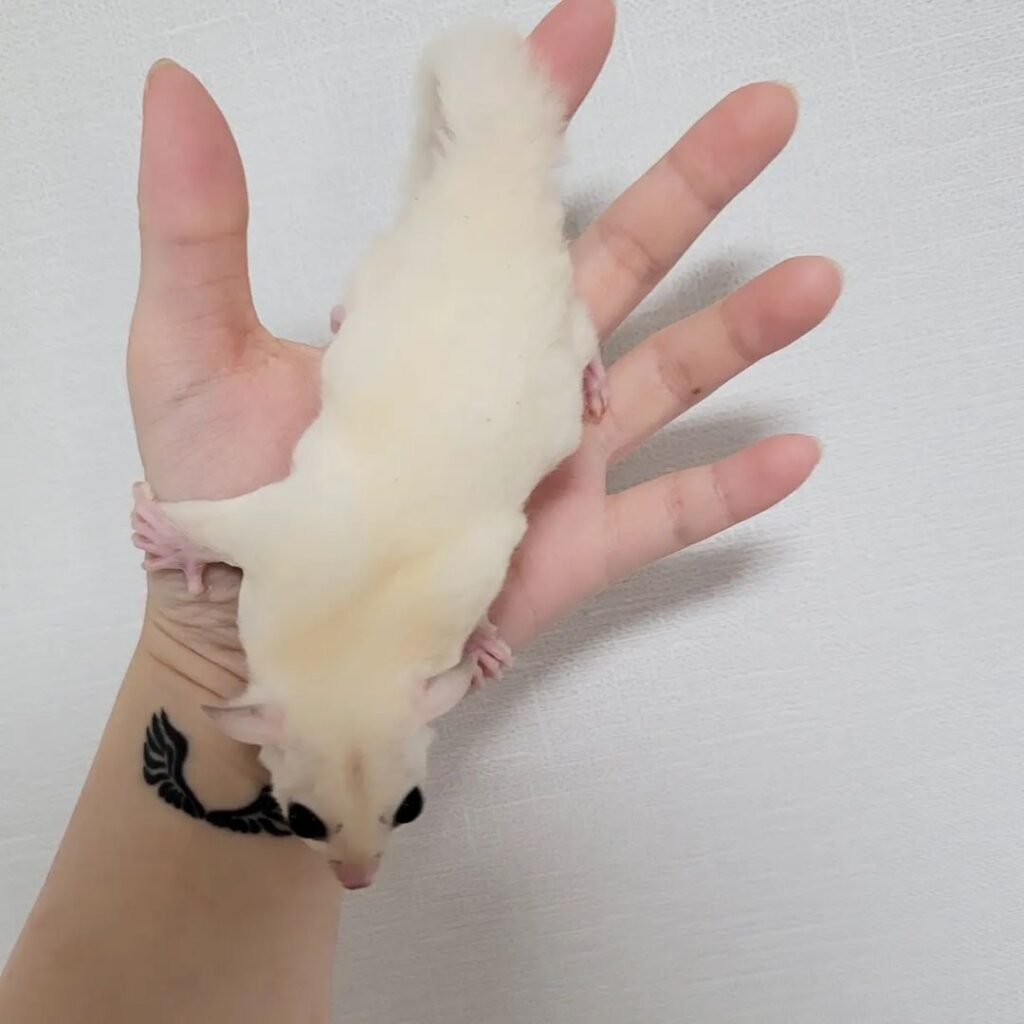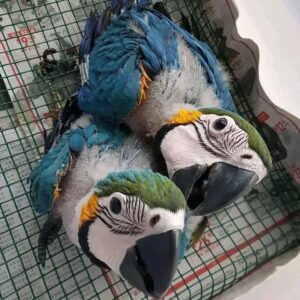
- 1 year health guarantee for all our exotic pets on sale
- [email protected]
Sugar gliders are palm-size possums that can glide half the length of a soccer pitch in one trip. These common, tree-dwelling marsupials are native to tropical and cool-temperate forests in Australia, Indonesia, and Papua New Guinea. Their “wings” are made from a thin skin stretched between the fifth forefinger and back ankle, and they use their bushy tails as rudders as they soar through the air.
Perhaps you’ve watched those endearing videos of Sugar Gliders gripping apple slices with their tiny hands and opposable toes. Or maybe you’ve seen Sugar Gliders jumping and gliding from one place to the other like mini superheroes. If they haven’t captured your heart already, it’s only a matter of time.
One might mistakenly call Sugar Gliders a special kind of rodent due to their small size and soft, furry bodies, and though they are indeed special, Sugar Gliders aren’t rodents at all. Sugar Gliders belong to the marsupial mammals; they carry their babies in little pouches, just like kangaroos, their distant cousins.
With a reputation of being cute and having a winning personality, they seem like the perfect pet. And for the right people, they just might be! But it’s important to know what you’re getting yourself into before you make any decisions. A new pet sugar glider is not a “learn from your mistakes” forgiving opportunity. It’s an exotic animal that demands you provide it with a certain standard of care. Here are a few things you will want to consider before making any Sugar Glider conclusions.
Sugar Gliders are nocturnal! If you’re the kind of person who feels the most alive at night, Sugar Gliders might be the right companion for you. In the wild, Sugar Gliders spend their daytime hours sleeping in dark nests, so when the night falls, they want to go out and play. Depending on where their cages are kept, these vocal and active critters and their late-night activities could keep you from catching some serious Z’s.
A lonely Sugar Glider can get seriously depressed, which can consequently lead to illness. In the wild, Sugar Gliders spend their lives living in colonies of around 12 others. They have an innate natural tendency to seek companionship, be it with other Sugar Gliders, or with their human companions.
This is why it is highly recommended to adopt multiple Sugar Gliders at one time. They will have a snuggle partner on those lonely nights when you’re not around, but this doesn’t mean you can slack. In order for your Sugar Glider to be able to completely bond with you, you have to be willing to make it a daily duty to spend time with your Sugar Glider pet. It’s well worth it, but no one said it would be easy.
Sugar Gliders have small, delicate bodies. They can easily injure themselves from falling on a tough, hard floor. They often become entangled in unsafe spaces or crawl into nooks that they can’t find their own way out of. Their diet is also quite strict.
Their food needs to be freshly prepared and include a balance of fresh produce and protein. When this diet isn’t adhered to, some serious health issues can arise.
So no, your 5-year-old daughter cannot feed your Sugar Glider the food she doesn’t want off her plate. The bottom line? Sugar Gliders are not a “starter pet” even if your kid is the most responsible one in their whole class.
It’s difficult to turn any home into an authentic Australian landscape. But truth is, if you want a happy Sugar Glider, you’re gonna want to try. Just kidding. But here are some important tips for creating the right environment for your Sugar Glider to thrive.
When looking for a Sugar Glider cage, remember to choose the enclosure that fits your pet’s current needs and age. For example, a baby Sugar Glider will need a small cage in order to feel safe, whereas a full-grown Sugar Glider needs a much larger cage, where height is given priority over floor space. As their name implies, these animals enjoy gliding up and down the cage, from top to bottom.
Sugar Gliders are clever little guys and the toys inside their cage need to be safe and stimulating It is also super important to let your Sugar Gliders spend supervised time out of their cages, roaming around and checking things out around your crib. These curious critters can get themselves wrapped up in the wrong things, however, so make sure to watch your pet carefully.
Sugar Gliders are exotic animals and they’re not legal in every state. In some states, like Pennsylvania and Massachusetts, you need a permit to own a Sugar Glider. So please, before you take one home, check twice that they are legal in your state. Then, make sure you purchase your new pet Sugar Glider from a legitimate, legal, safe breeder.
Sugar Gliders are a lot of fun and can give you a warm, cuddly, loving, and rewarding feeling if they are taken care of properly. They require a lot of attention, so be sure you are prepared to supply that kind of care before you decide to welcome a Sugar Glider into your family.
Remember to keep in mind that if this is your first Sugar Glider, it’s very common to be unsure if you are handling everything properly. Therefore, should you have any questions or concerns, do not hesitate to CONTACT US.


Click the link below to get to our sugar gliders for sale page if you are interested in buying a sugar glider companion.




















Copyright © 2025 Compound Exotics All Rights Reserved.